
There is something inherently fun about seeing everyday objects in miniature. Whether it’s a model railroad with impressive detail or a tea set made smaller for a child, these items rarely fail to put a smile on my face.
Naturally, whenever I come across a tiny-sized variety of a vegetable, I start thinking about an entire garden of wee veggies.
Beyond the fact that they’re cute as heck, growing small and compact vegetables offers several benefits to the gardener.
Why Grow Miniature Vegetables?
Variety in a Small Space
If you’re a gardener with limited space, growing smaller versions of vegetables provides you with the opportunity to grow many different plants in the same footprint where you may only have been able to grow a couple.
For example, let’s take a 4’x4’ raised bed; normally, this would be enough space for a large Roma tomato, perhaps some lettuces at the base, and maybe a couple of marigolds in the corners. Tomato plants have a way of sprawling and taking over, even when staked.
If you were to plant miniature vegetables in that same plot, you could easily plant 12-16 different varieties of miniature vegetables, including a micro tomato or two.
If maximizing your growing space is one of your gardening goals, consider planning a tiny vegetable garden, or at the very least, add a few of these micro varieties in with your other plants.
Extend Your Growing Season – Indoors!
Many a gardener gets a tear in their eye when they harvest that last veggie in the fall.
If you live in an area with cold winters but long for the crunch of fresh vegetables in January, consider growing a few tiny vegetables in pots around your home. Because of their minute size, you could easily have peas on your kitchen windowsill, a micro tomato on your end table in the living room, and a tiny patch of bok choy growing in a window box planter set on a windowsill.
If you have grow lights on hand, your tiny indoor gardening possibilities are limited only by space.
Something you should keep in mind when planning to grow food inside is pollination. Be sure the veggies you grow are self-pollinating. To help them further, use a small paintbrush or cotton swab to gently dust each flower’s inside. Just be sure you use a different brush or swab for each different variety of plant.
You could be enjoying a freshly picked salad grown right in your house while the snow falls outside this winter.
Tiny Veggies Are Perfect for Kids
If you have kiddos and want to get them interested in gardening, wee vegetables are the way to go. Remember that 4’x4’ plot we mentioned earlier? Give your kiddos a few packets of tiny vegetable seeds and let them plan out their own miniature garden.
Smaller plants make it easier for smaller hands to harvest too.
Kiddos can get intimidated by large bushy plants, often wondering what’s lurking beneath those leaves in the dark. Having a garden filled with small plants they can easily see in and around will make tending them easier and more fun.
You’ll be teaching your children much more than gardening, as well. You’ll be fostering independence, creativity and a skill that will serve them throughout their lives. Who knows, you may even get them to eat their vegetables finally!
Mini is Mighty
You’ll see one common theme throughout this entire piece, well, beyond that everything is small – miniature varieties tend to be very prolific. What they lack in size, they make up for in output.
This is just another reason why these tiny powerhouses are a great option for anyone with limited space.
Tiny Vegetables Are Fun
And the final reason to grow tiny veggies is they’re fun! Sometimes we get entrenched in serious gardening. We get stuck on what variety did great in the past, what will make the best pickles, which tomato is the most disease-resistant, and we forget one of the best parts of having a garden – growing new things.
If you’ve been sticking to your old standbys year in and year out, I encourage you to grow at least one of these little vegetables just for the pure fun of it! Who knows, you may discover your newest favorite variety.
1. Parisienne Carrots
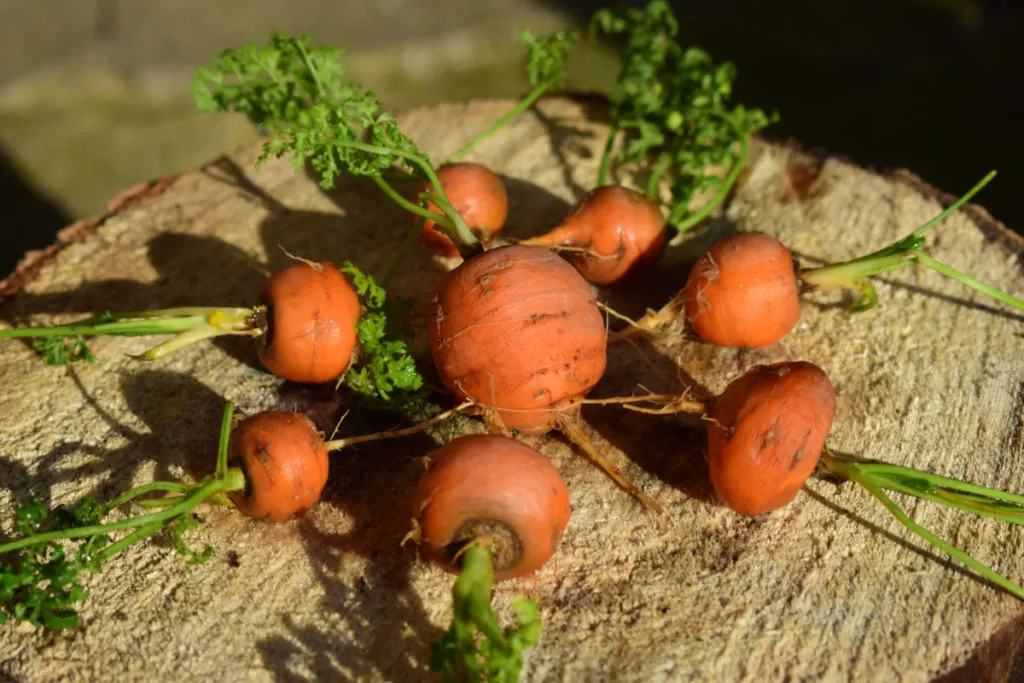
These exceptionally small carrots come out of the ground bite-sized, crunchy and sweet. Its short root makes it a good choice for those with very heavy soil or who never seem to have good luck growing carrots. This particular variety is easier to grow and not fussy about where it ends up getting planted. All of these qualities make it a good choice for kiddos to plant too.
2. Nana Alba Lavender
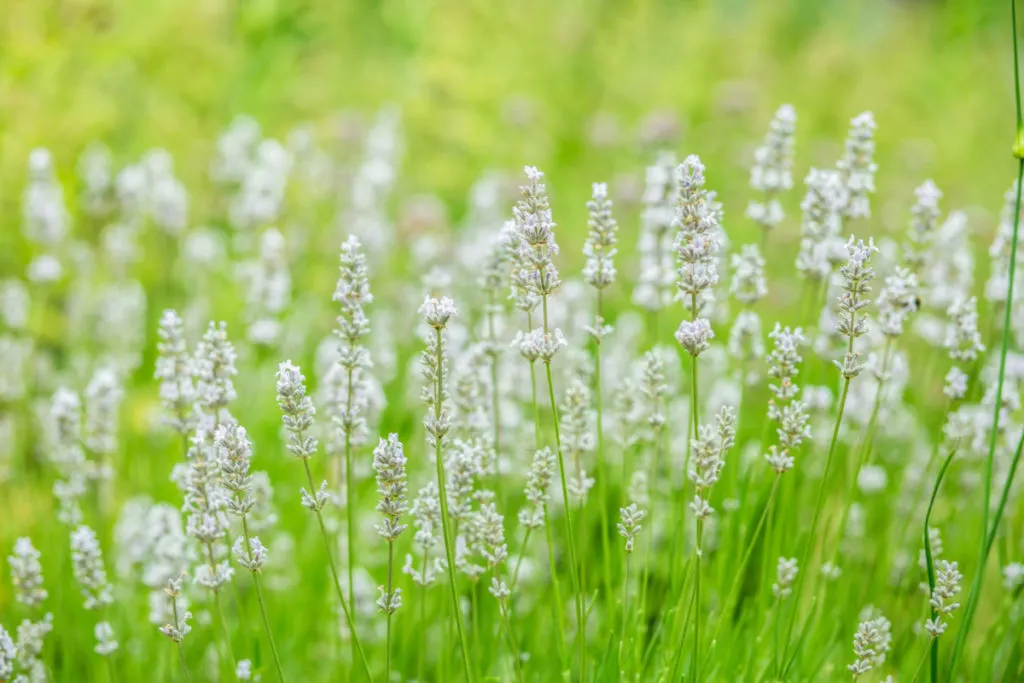
This stunning white lavender will have friends and neighbors asking, “Ooh, what’s that?” It’s a compact, 10”-12” tall variety, making this lavender the perfect choice if you don’t have room for a larger, bushier variety.
This little English variety of lavender still has the distinct lavender smell you know and love. Its petite flowers grow on shorter stalks than other larger varieties, and its overall size makes it the perfect lavender to grow in pots.
3. Little Gem Lettuce
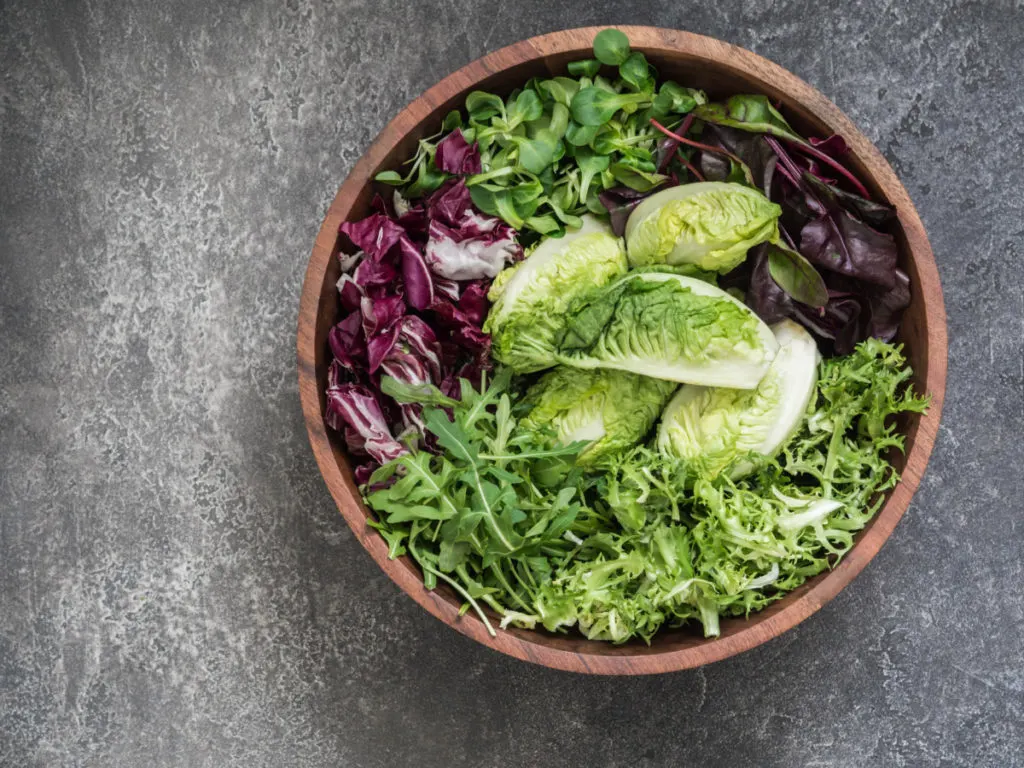
If you love a good cobb salad, you’ll want to be sure to grow little gem lettuce. This romaine variety produces small, compact heads. You’ve basically got an individual-sized salad in every head.
Sweet and crunchy, this lettuce has more than just its tiny size going for it, as it’s quite heat-tolerant, making it a good choice for warmer climates. And it does just as well grown indoors as it does out. If you’ve got a bare windowsill and a window planter, you could easily have a row of romaine lettuce to nibble this winter.
4. Tennis Ball Lettuce
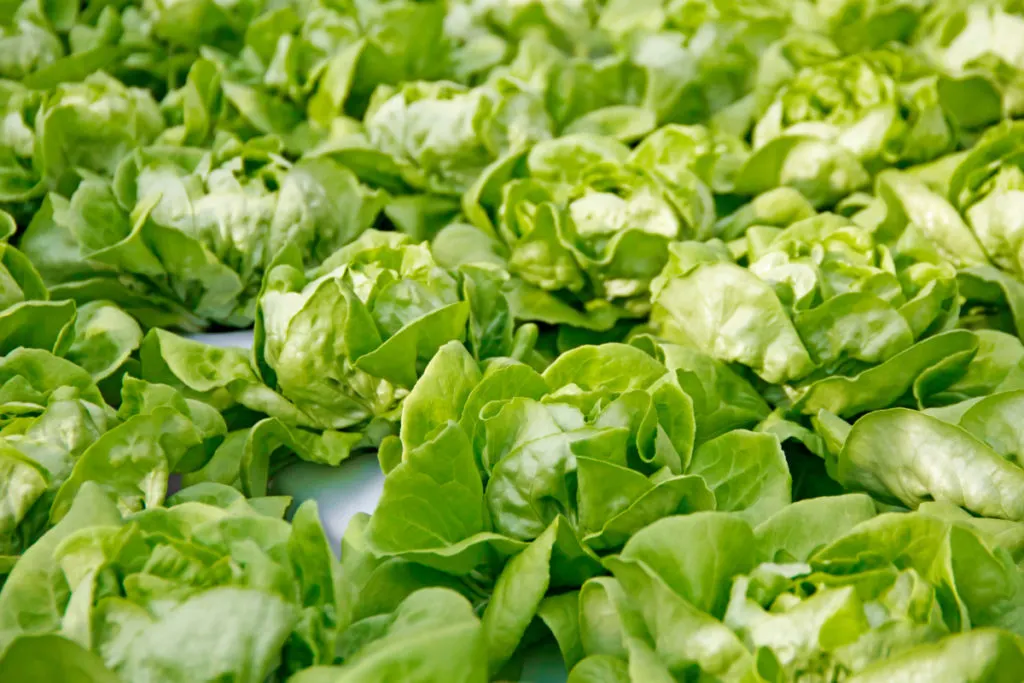
As the name suggests, these bibb-type lettuce are around the size of a tennis ball, with light green leaves that ball loosely. The tennis ball variety is the parent to the modern Boston bibb lettuces. And it was apparently a favorite lettuce of Thomas Jefferson, who grew it at Monticello and wrote about it in his book, Notes on the State of Virginia.
5. Tom Thumb Lettuce
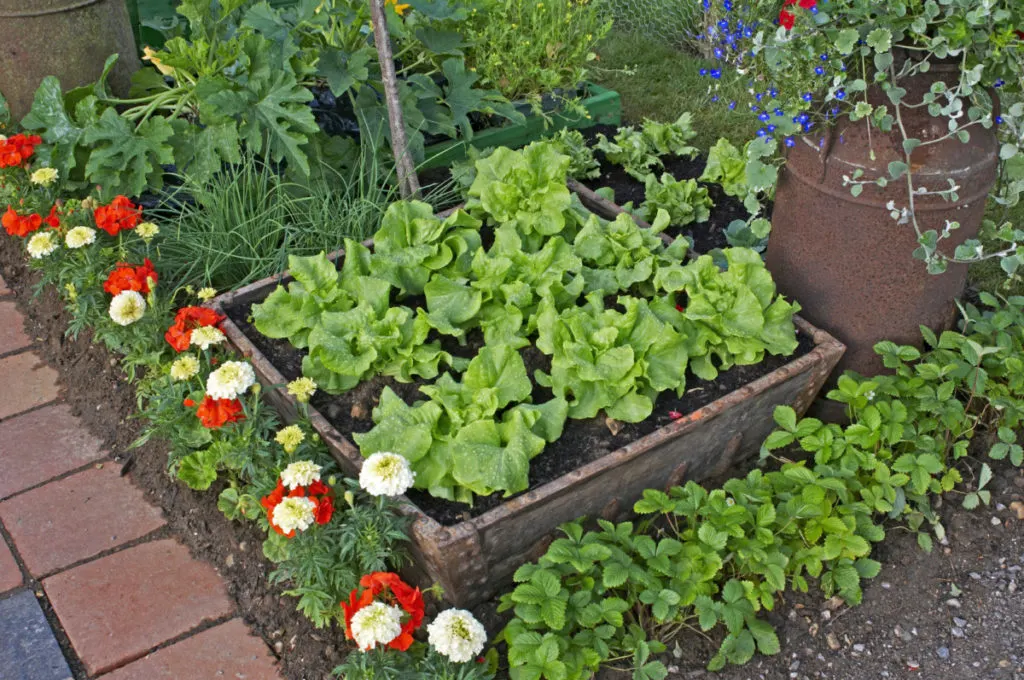
Yet another tiny lettuce variety, Tom Thumb lettuce, may be the most well-known dwarf variety of lettuce. And it’s no wonder as it’s quite tasty yet resilient. Some gardeners have even had luck overwintering this variety.
Sandwich and burger lovers, plant several Tom Thumb lettuces for the perfect sandwich and bun-sized lettuce leaves. It doesn’t get much better than that!
6. Green Onion
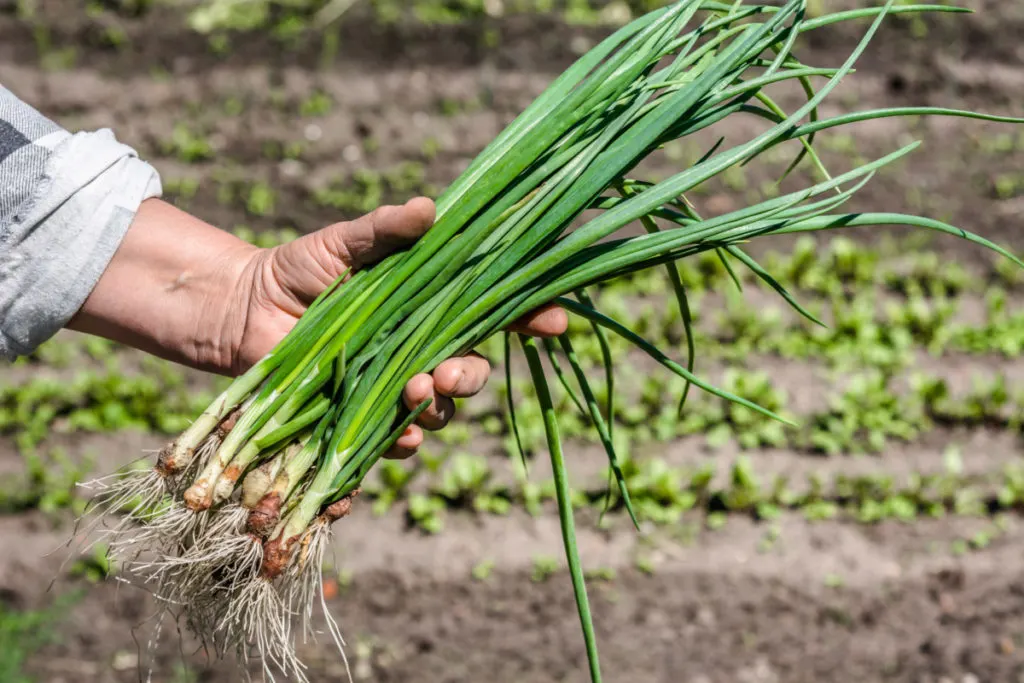
You can’t have a miniature vegetable garden without adding some green onions. Of this entire list, scallions are probably the most well-known “tiny” version of a popular vegetable, so much so that I’ll bet you probably didn’t even consider it as a miniature.
Not only are green onions easy to grow and quick maturing too, but you can easily regrow them from scraps. Grow green onions indoors or out year-round, so you never run out of their pleasantly spicy flavor.
7. Biquinho Yellow Pepper
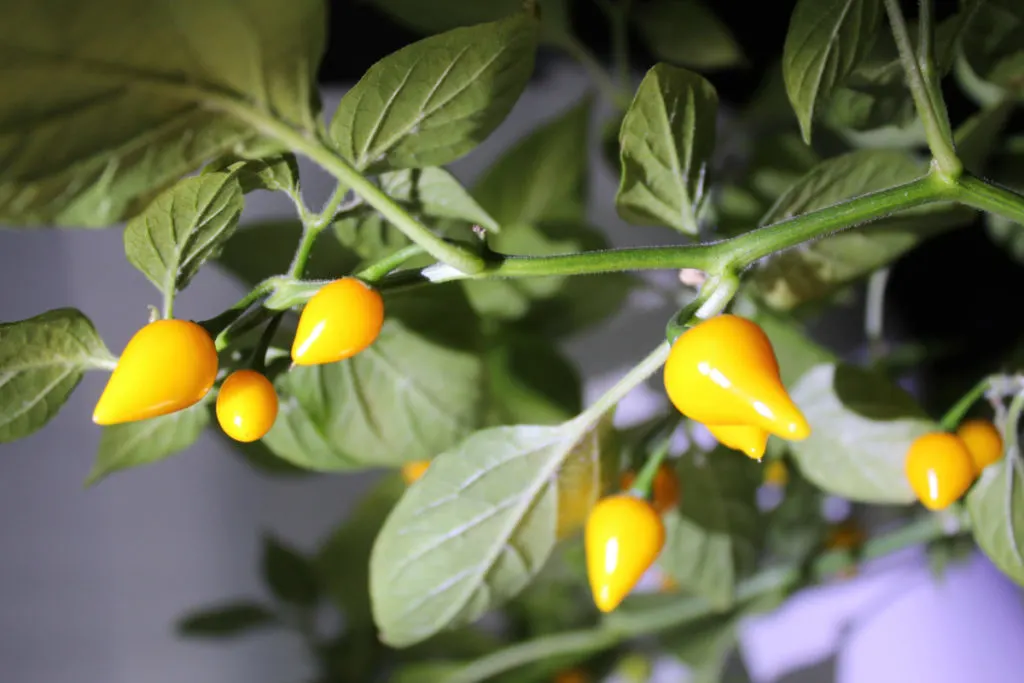
I’m just going to start right off and say these guys make for some seriously great pickles. The tiny, bright yellow peppers are bursting with flavor – crispy and sweet with just the hint of smokiness you’d expect from something like a poblano.
They make a beautiful ornamental plant in among your flower beds or even as a houseplant inside. However, if you want peppers indoors, you’ll need to make sure your house is good and warm, and you may need to hand pollinate the flowers. (You can use this method to pollinate your flowers.)
8. Lemon Summer Squash
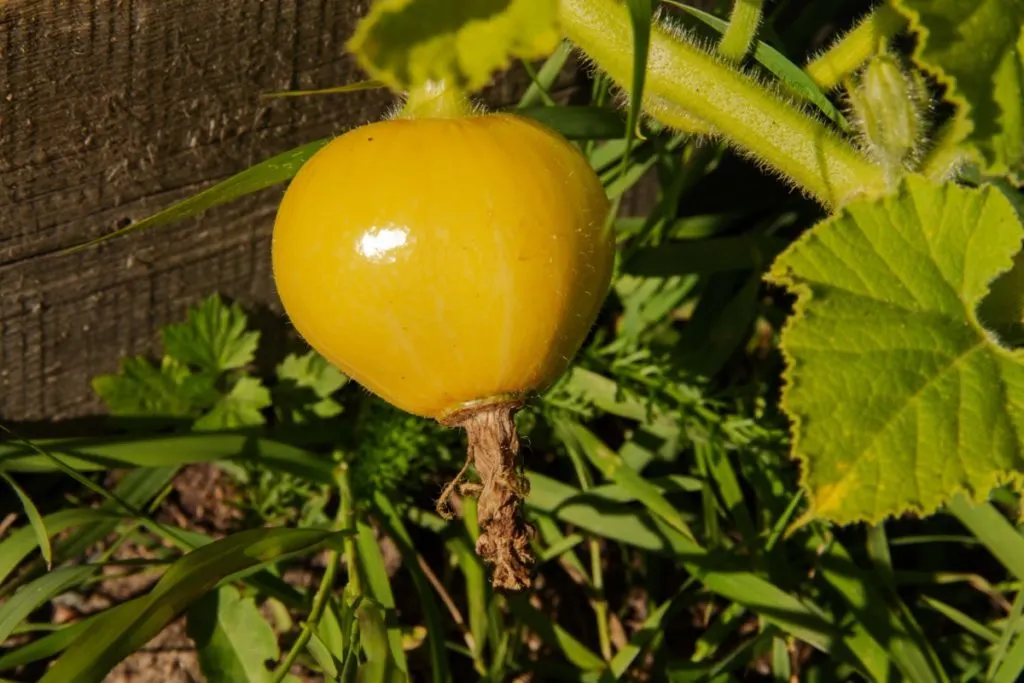
This is a great summer squash for folks who don’t have a lot of room. The plant can easily be grown trellised because the mature squash is about the size of, you guessed it, a lemon. They can easily be trained to grow in a tomato cage as well.
The small lemon-sized fruits are tasty, similar to a yellow straight-neck variety. And best of all, they’re incredibly tough; lemon squash is nearly impervious to the usual bugs that attack squash. If you’re tired of finding your summer squash covered in insects, give this variety a try.
9. Tom Thumb Peas
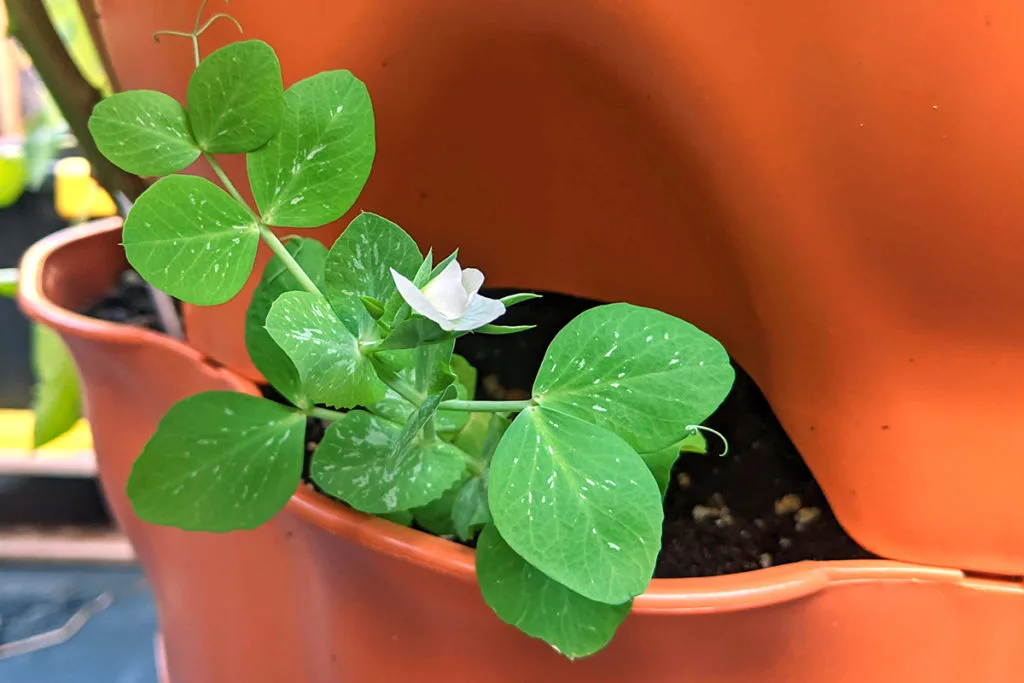
I grew these in my Garden Tower this spring, and they were a lot of fun. I’m set to grow another round in the fall. These tiny little plants are adorable planted in terracotta pots, whether you grow them inside or out. And you’ll be surprised at how prolific they are for such a tiny little plant. Keep picking, and they’ll keep producing.
The peas themselves are quite tasty, a little smaller than other pea varieties, but that’s the point. They’re also just as good eaten as a sugar snap variety.
10. Birds Eye Pepper
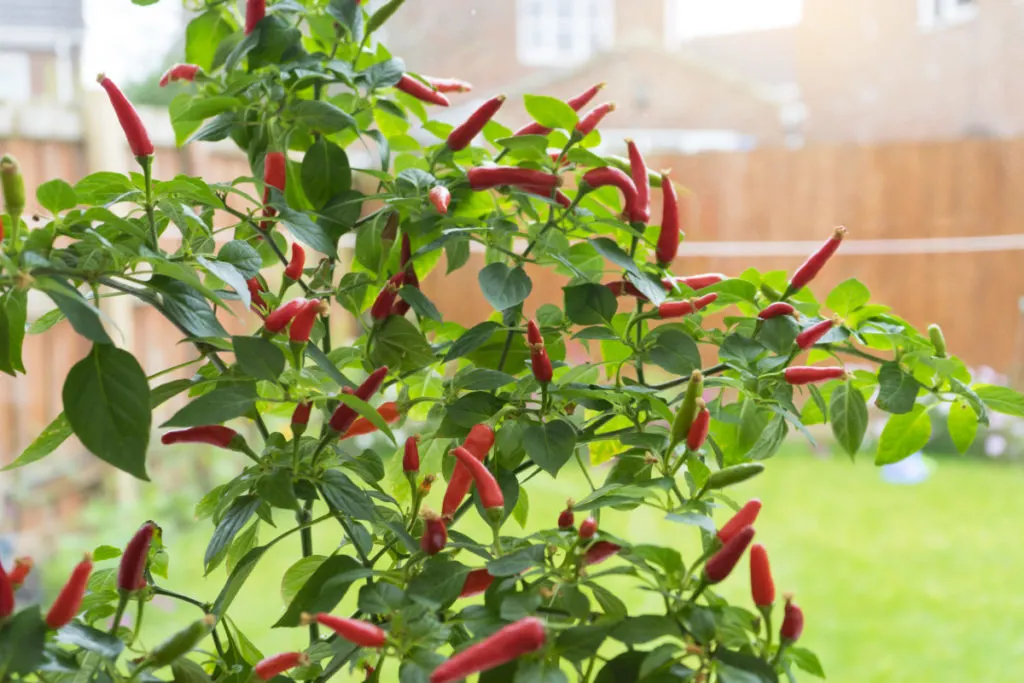
If hot peppers are your thing, you’ll want to add this tiny little pepper plant to your miniature garden. Thai chilis or birds eye peppers pack a punch in a tiny package. The plants are small and compact, making them ideal for growing in containers.
The tiny little peppers pop up all over the plant, making it look as though the plant has tiny red Christmas decorations all over it.
If you enjoy piri piri chicken, the birds eye pepper is a good substitute pepper.
11. Mini Bell Peppers
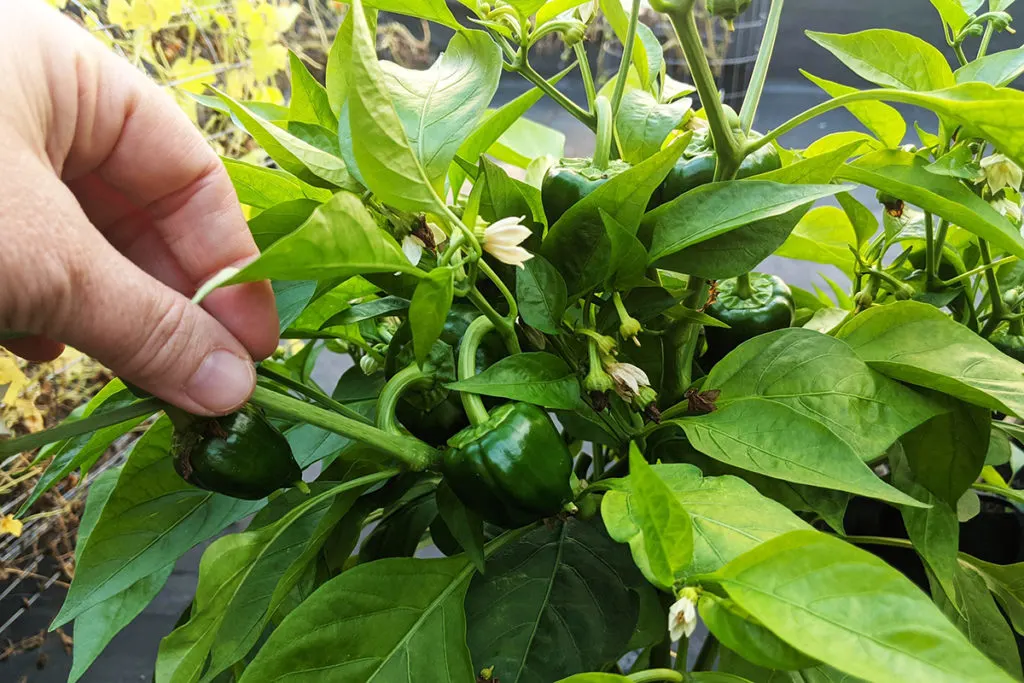
Bell peppers, only smaller. I actually had the pleasure of growing one of these plants this year, and I have to say, as someone who isn’t a bell pepper fan, I’ll be growing them next year too. I never have luck growing bell peppers; they always end up tiny and bitter.
This cultivar amazed me, though. Once it got started, I was constantly (and still am) picking little peppers off of it. The peppers themselves are thin-walled, meaning they cook up quickly, and they weren’t all that hard to remove the seeds and core. I simply cut a hole in the top of the pepper and pulled the core out.
Give this pepper a try if you’re limited on space, but need a pepper plant that doesn’t quit!
12. Minnesota Midget Melon
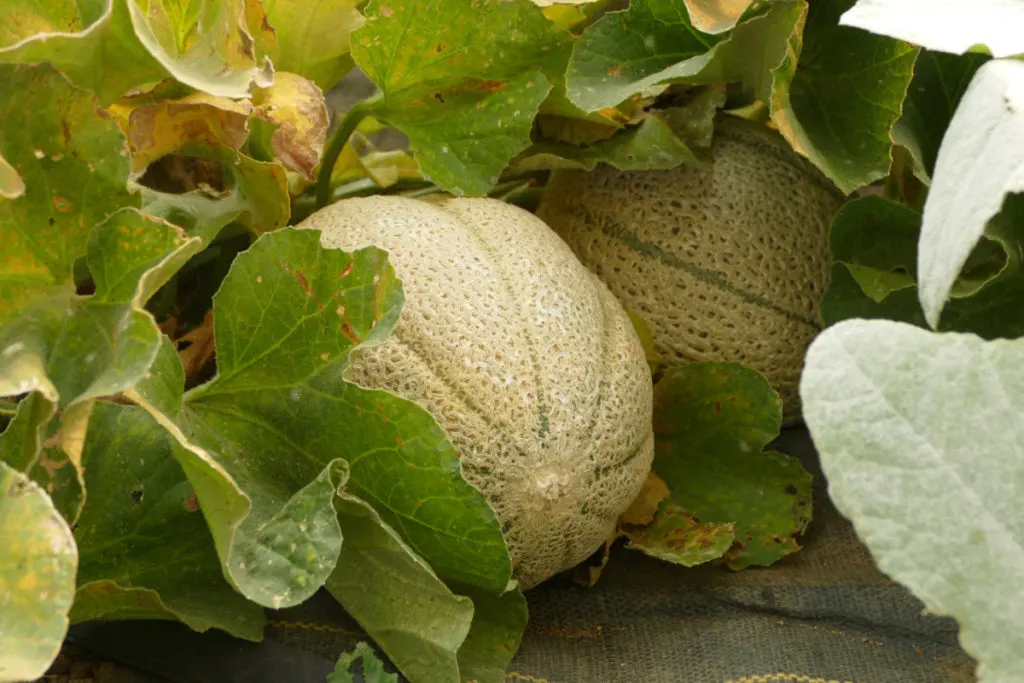
If you’ve got a sweet tooth, you’ll probably want to plant a mini melon in your tiny vegetable patch. These little cantaloupes will certainly do the trick. The plants themselves are much more compact than other varieties, with vines reaching around 3’ to 4’, and the melons themselves around 4” across.
The melons fall from the vine when they’re ripe, making it easy to know when they’re ready to eat. The sweet and smooth cantaloupes make the perfect individual-sized portions when cut in half. Breakfast for two is only a slice away.
13. Orange Hat Tomato
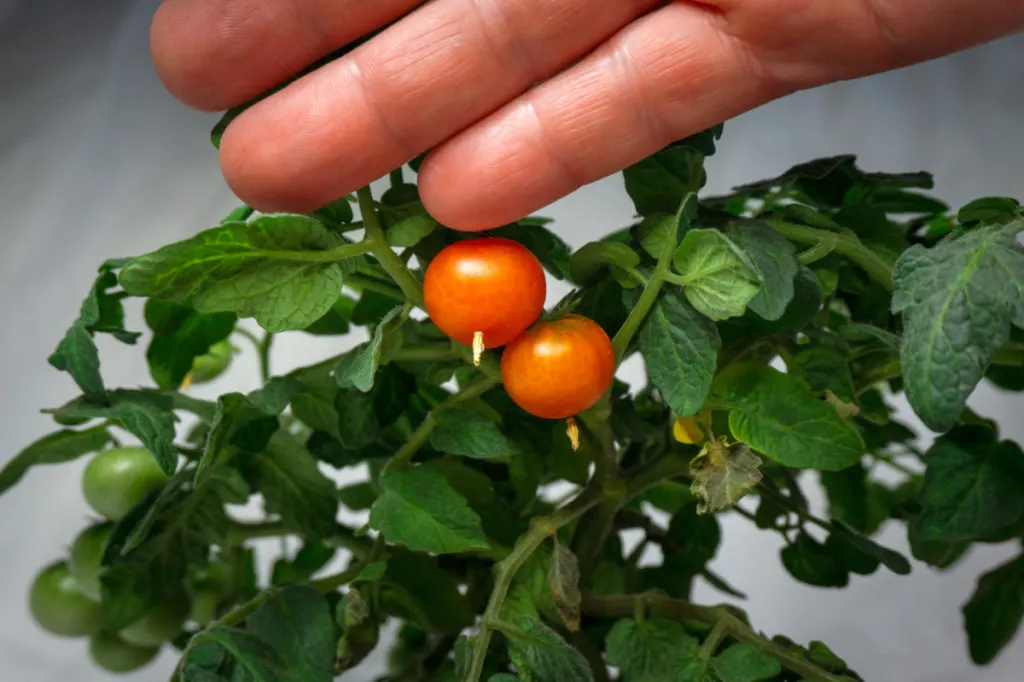
Tomato lovers, we didn’t forget you! Are you ready for this? The orange hat tomato maxes out at a whopping 9” tall. (I can hear the squeeing from here.) Not only is this tomato a perfect option if you’re limited on space, but it makes for a gorgeous edible ornamental plant. Tuck a few into your flower beds or even your window boxes, place them in containers around the patio.
And the best part about this tiny tomato is how prolific it is. Just keep picking, and it will keep producing.
If you miss the flavor of fresh tomatoes in the winter months, get a couple of these plants going under grow lights inside, and you’ll have fresh tomatoes all winter long.
14. Micro Tom Tomato
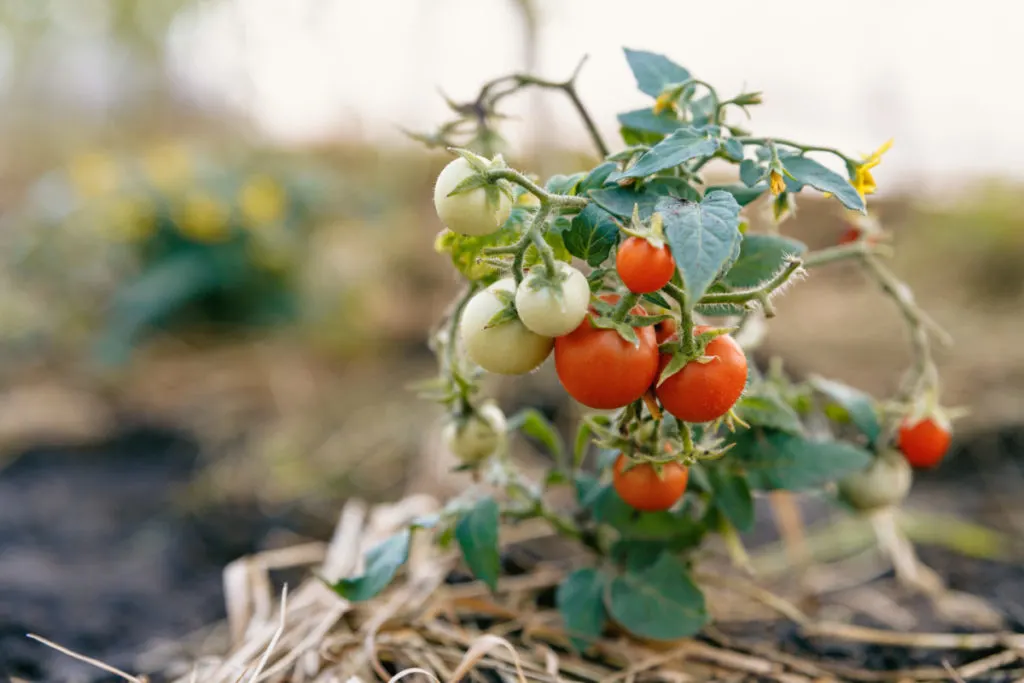
Another tiny tomato is the impressive Micro Tom. And it, too, is the perfect container tomato, maxing out around 8” tall. The micro tom tomato is also a good producer and a quick producer of fruit, making it a good indoor gardening option.
15. Hedou Bok Choy
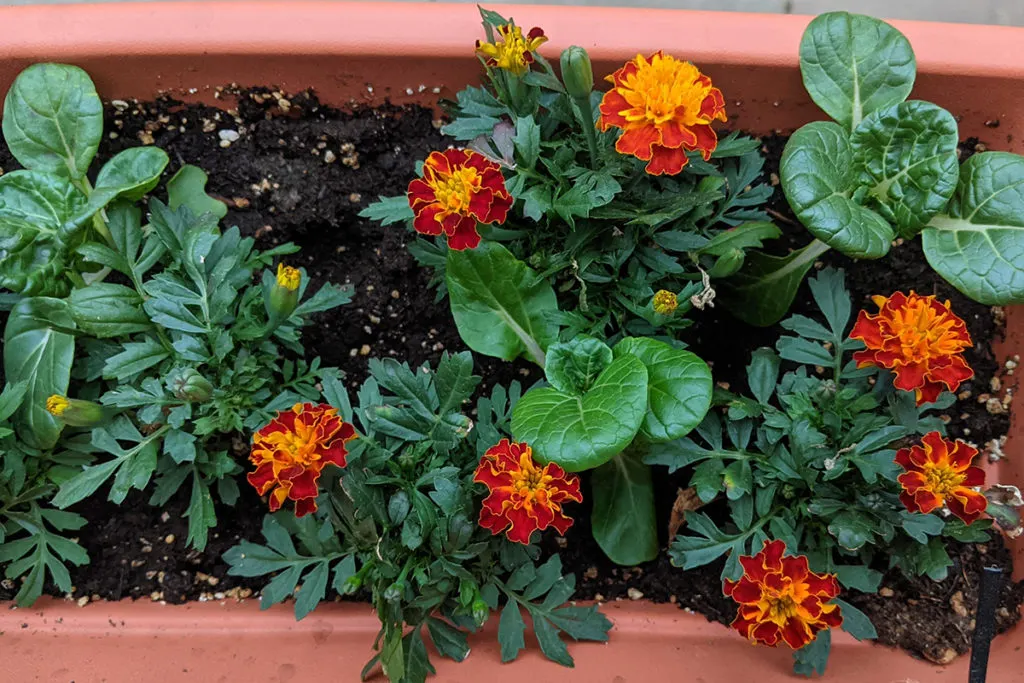
I grew these everywhere this summer, and always had tiny, fresh bok choy for stir-fries and homemade kimchi. With two packs of seeds, I just poked a seed or two in the ground wherever they would fit. I stuck them in with other vegetables and even grew them mixed in with my flowers on my balcony.
These tiny bok choy clock in around 2-3 inches wide, so you really can plant them just about anywhere you’ve got a spare bit of soil. And they mature around 15-20 days, making them the perfect instant gratification vegetable.
16. Thai Lavender Frog Egg Eggplant
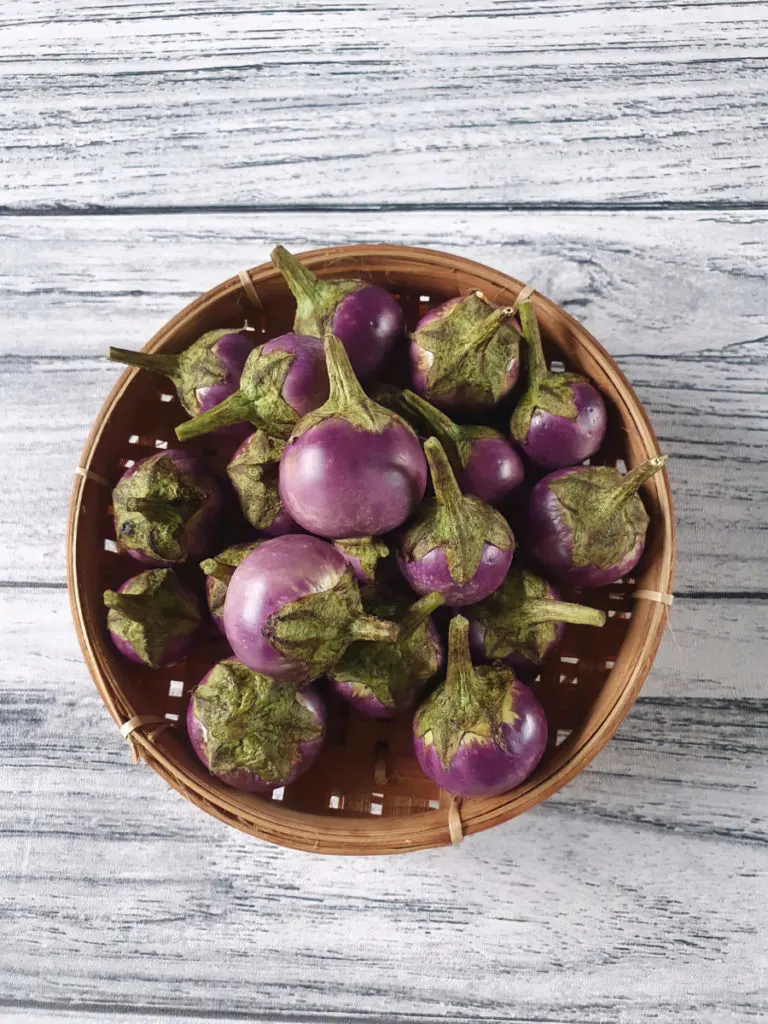
Bite-sized eggplant? Yes, please! These Thai eggplants are roughly 1” in diameter with thin skin, so you don’t have to slice them. Simply cut off the tops and cook them. And like so many other dwarf varieties, the Thai lavender frog egg eggplant (boy, that’s a mouthful) is a heavy producer.
If you need ideas for what to make with all your teeny eggplants, I’ve got 12 Delicious Eggplant Recipes for you to try.
17. Dwarf Blue Curled Vates Kale
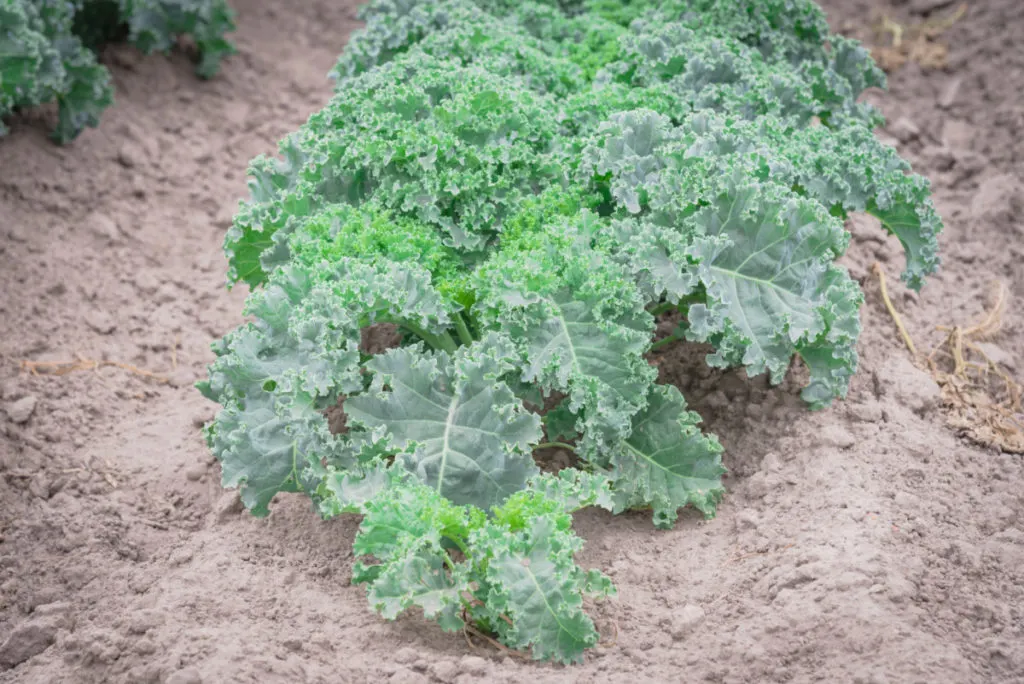
Much to my amazement, I got my two young boys hooked on kale by throwing it in their morning smoothies. Instead of, “Ugh, is there kale in this?” these days, I hear, “Mom, make sure you put kale in the smoothies, please!”
While many varieties are incredibly cold-hardy, meaning they will grow well into the winter, they also take up a lot of space. Dwarf blue curled vates is a compact 12”, making this the perfect container kale.
18. Tennessee Dancing Gourd
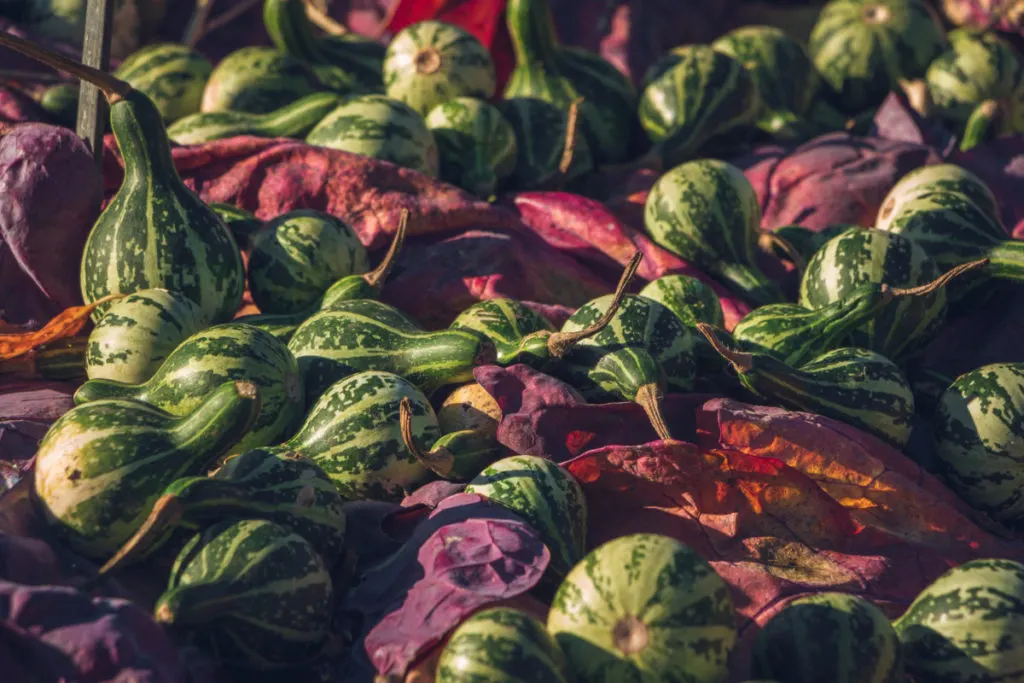
If you enjoy growing ornamental varieties, then you’ll want to make a space for this cute little gourd. The Tennessee dancing gourd is also known as the spinning top gourd, and it’s not hard to see why. The small 2” gourds make perfect spinning tops!
Grow your own fall decorations this year; one plant will produce hundreds of tiny gourds. These can easily be trellised, too, making them easier to grow and pick.
19. Greek Dwarf Basil
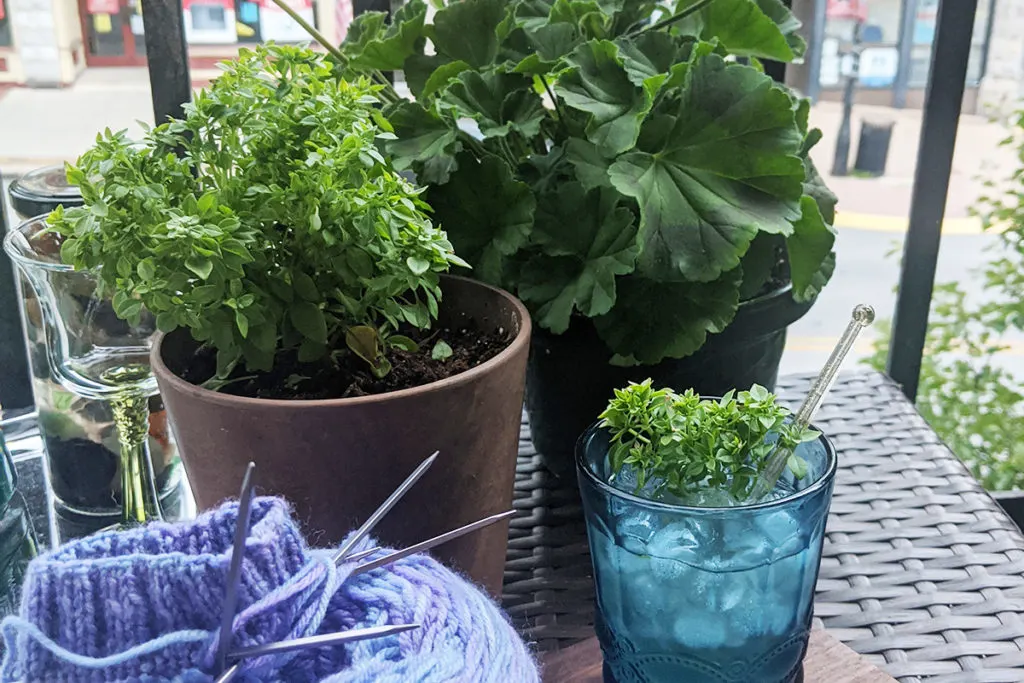
I first came across this basil in 2020 during the lockdown. A friend popped one in the bag with my delivery from a local shop. She figured we could all use a little cheering up then, and boy, teeny-tiny basil sure did the trick.
This basil is small, but its leaves pack a serious flavor punch. I snipped bushy little sprigs of it with my embroidery sheers to use in pasta, make tea, infuse honey, and even a few fun cocktails.
20. Babybeat
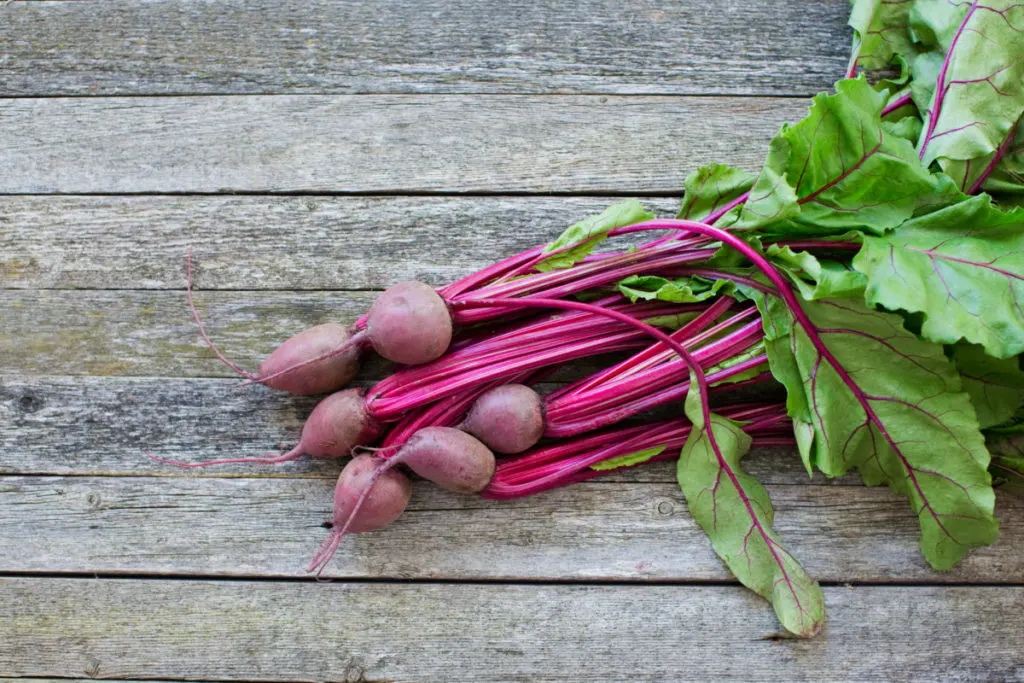
Sure, you can just pick beets early if you want smaller beets, but you’ll often get underdeveloped roots that way. The babybeat is meant to be grown and picked small.
If pickled red beets are your thing, you can easily grow individual, bite-sized beets for the purpose. And your Harvard beets will never have tasted so good when you can eat them in one bite.
21. Tokinashi Turnip
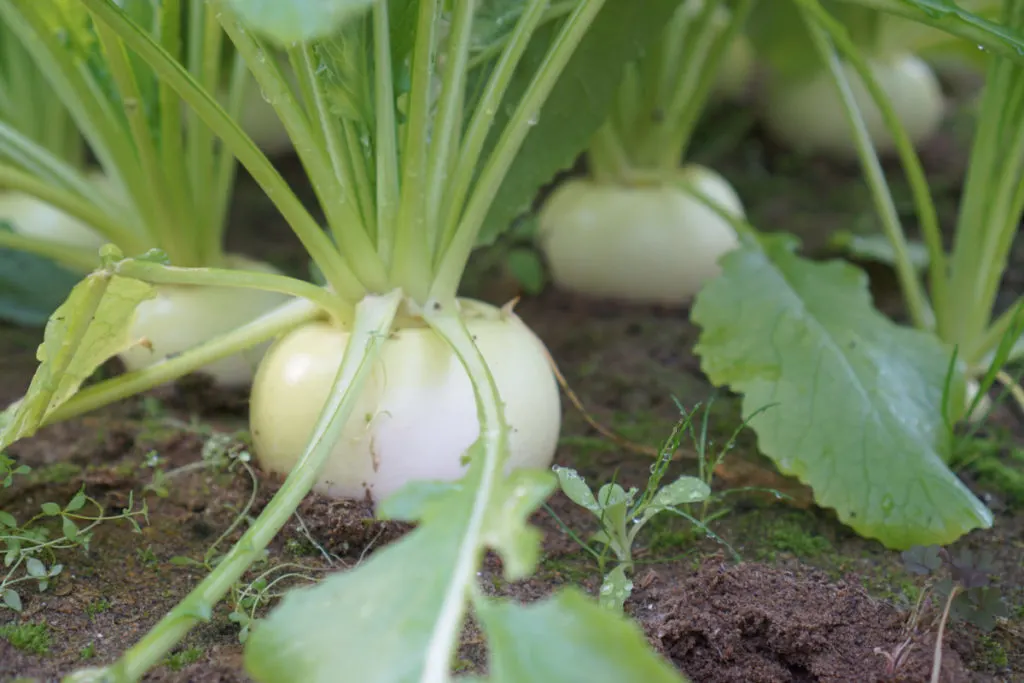
These are the only turnips I grow anymore; the flavor is so much better than their larger counterparts. And because they’re bite-sized, it cuts down on cooking time with less chopping, dicing and slicing.
If you’ve never grown turnips, I highly suggest giving these radish-sized globes a try. You’ll be pleasantly surprised at how easy they are to grow and how tasty they are.
22. Chinese Broccoli
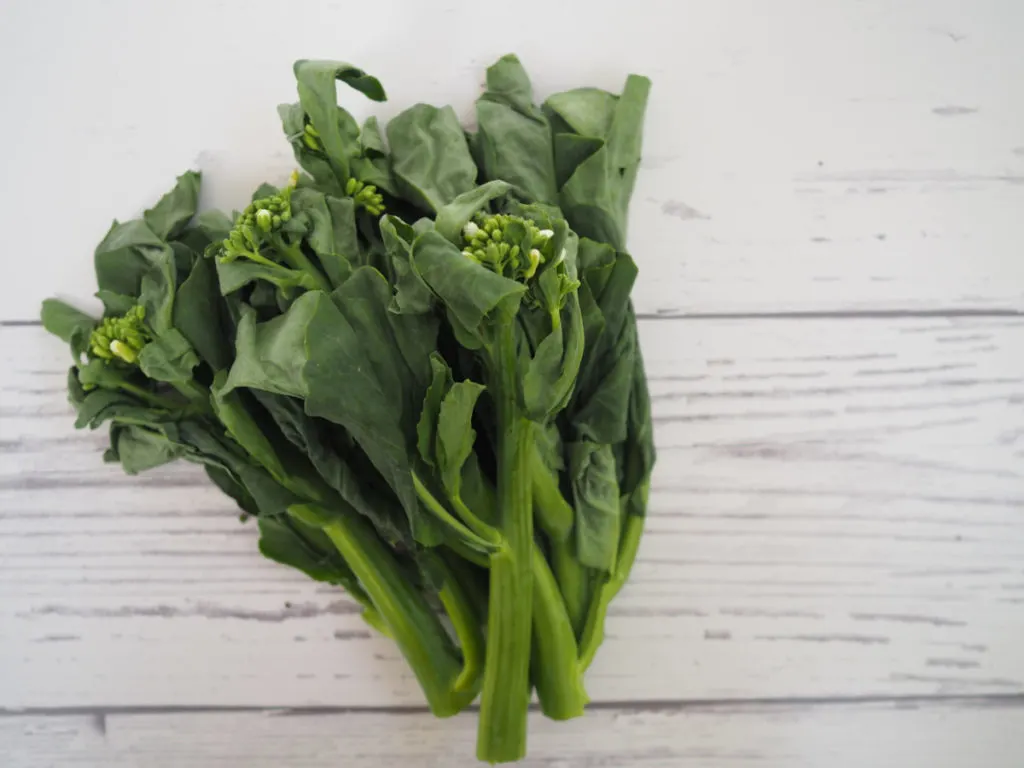
This Chinese variety of sprouting broccoli is easier to grow than regular broccoli and takes up less room. While you get fewer florets with Chinese broccoli, you won’t miss them when you taste the delicate, crunchy stems. And you eat the leaves as well, giving you more veggie bang for your buck. As you pick them, new stems will grow back in their place.
23. Picolino Cucumber
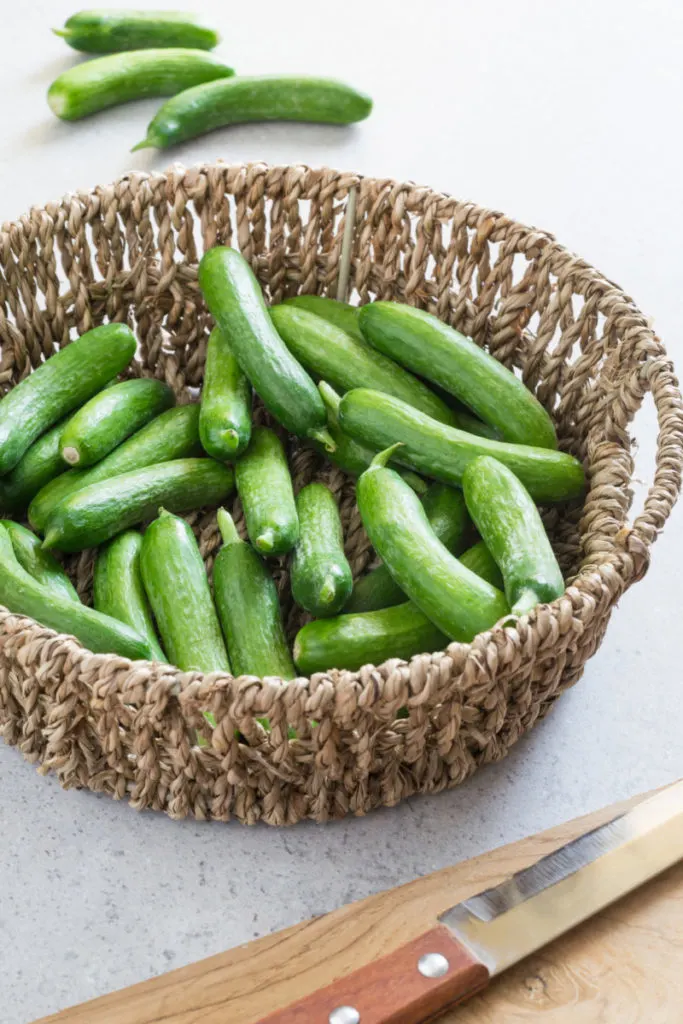
“Cocktail” cucumbers are all the rage these days. I’ve seen these smaller cucumbers wrapped in plastic in the grocery store selling for $5 for six tiny cucumbers. Ha! Who needs ‘em when you can grow them yourself?
The picolino has thin skin and is rarely bitter. Pick the cucumbers when they’re between 4”-5” long for the best flavor. Naturally, their size makes them great candidates for pickling, especially refrigerator pickles.
24. Jack Be Little Pumpkins
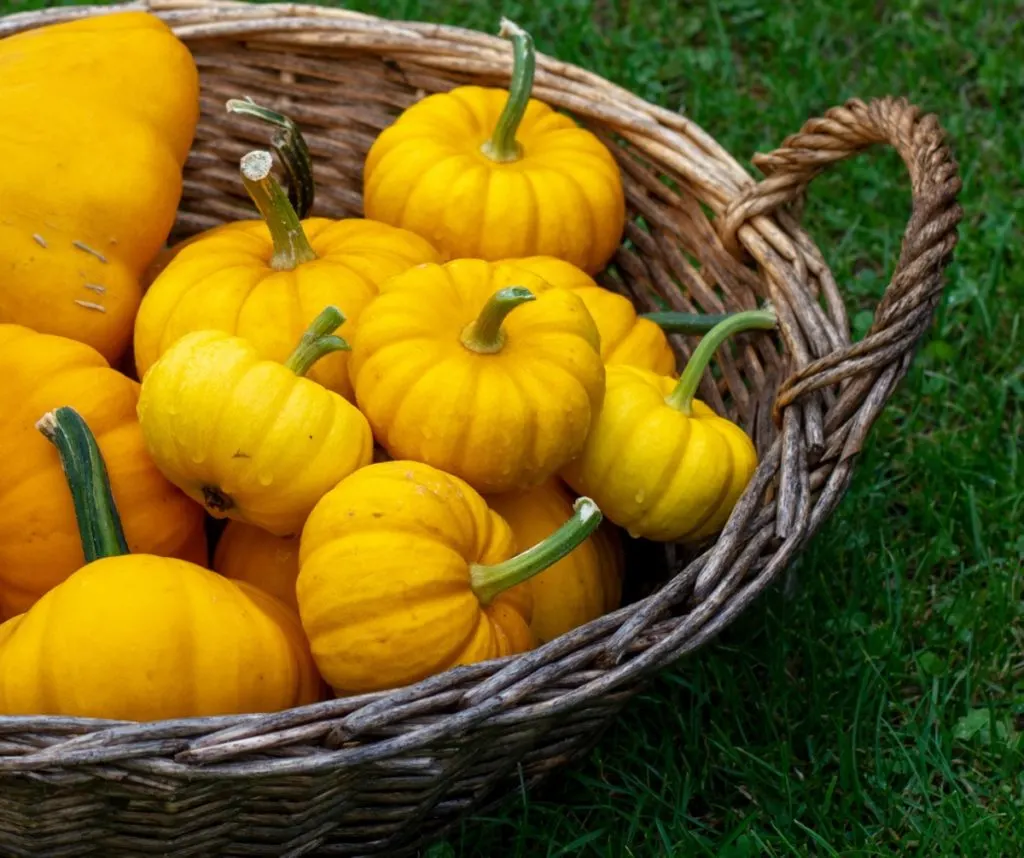
Everyone’s favorite tiny vegetable comes in October. While you’ll need some room for the plants, the actual pumpkins, as we all know, are quite tiny. These are a favorite to grow among the younger gardeners and deserve a spot in every childrens’ garden.
When it comes to growing pumpkins, my sweetie and I skip the garden. We plop a mound of compost somewhere in the yard out of the way, poke our seeds in and give that section of the yard up to pumpkins. These little pumpkins can even be trellised and grown vertically as the fruits are so small.
25. Cucamelon
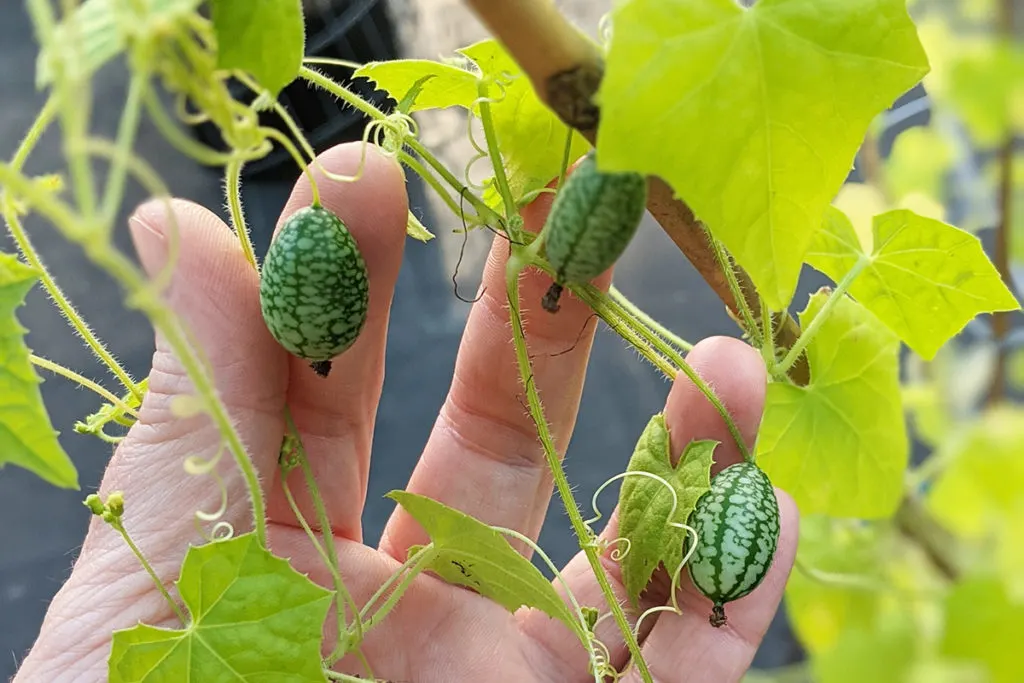
Gosh, these little guys are fun to grow and pick. This year was my first year growing them, and I have to say very few made it into the house. They were picked and eaten by the handful while I tended to my garden.
While the plants are much smaller than a traditional cucumber, I would advise you to trellis them and encourage them to grow vertically if space is at a premium. And don’t forget to check out our handy cucamelon growing guide.
I’ll bet you never knew there were so many tiny vegetable options, did you? Are you planning your teeny-tiny garden yet? Here, you can borrow my teeny-tiny pen and teeny-tiny colored pencils.

Get the famous Rural Sprout newsletter delivered to your inbox.
Including Sunday musings from our editor, Tracey, as well as “What’s Up Wednesday” our roundup of what’s in season and new article updates and alerts.

